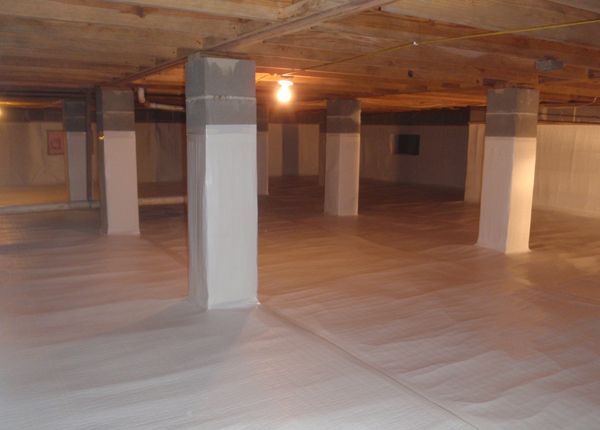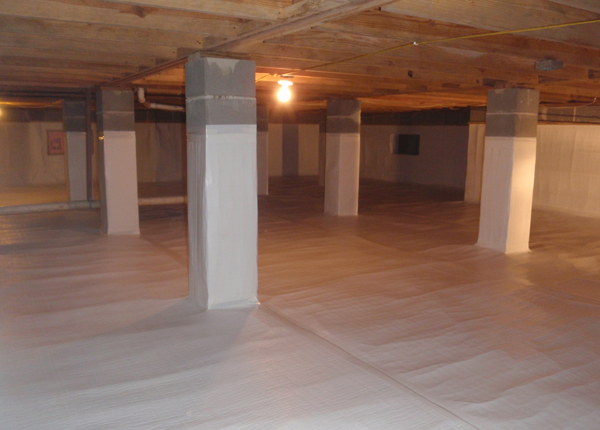
Morgan Martin has the results of an energy audit it hand, and his next objective is sealing air leaks in the crawl space beneath his house.
More from greenbuildingadvisor.com
Building an Unvented Crawl Space
Q&A: Out-Gassing of Bad Stuff from Spray Foam Insulation
His builder suggests removing the fiberglass batts already installed in the floor and sealing leaks with tape and caulk before re-insulating. He could re-use the fiberglass insulation, combined it with a thin layer of sprayed in polyurethane foam or skip the fiberglass altogether and add a thicker layer of foam.
There are a couple of complicating factors, chief among them Martin’s concern the sprayed foam will exacerbate existing chemical sensitivities.
He looks for suggestions at GreenBuildingAdvisor’s Q&A forum, and the discussion is the topic of this week’s Q&A Spotlight.
Read the whole article at Green Building Advisor
Fine Homebuilding Recommended Products
Fine Homebuilding receives a commission for items purchased through links on this site, including Amazon Associates and other affiliate advertising programs.

Affordable IR Camera

8067 All-Weather Flashing Tape

Handy Heat Gun




























View Comments
You want the right answer, you have to ask the right question. In this instance, we need to ask what we expect the crawl space to accomplish. THAT will determine what else you want to do.
Implicit in the question asked by this thread is the assumption that one answer 'fits all.' Not likely. With different reasons for a crawl space, it's certain that there is no simple answer.
First off, local conditions vary greatly. You'll have different requirements between rockt Reno, Nv., and the Alaskan tundra ... and different again for a crawl space in a flood plain.
Are we getting a crawl space only as a consequence of using piers as an economical foundation on hilly ground? Are we trying to protect the occupants of the house from radon gas? Are we trying to make the plumbing easier to service? Is moisture an issue?
Oddly enough, IMO, the 'most versatile' crawl space is one where the floor above is completely sealed and seriously insulated - while the crawl space itself is extremely well ventilated. This opinion differs with the precept of both this thread, and one of the recent 'inspector' games.
Following lessons I've learned with basements, I maintain that if you have a moisture issue, sealing is NOT the solution- better ventilation is.
There's a certain paradox in insulating both crawl spaces and basements; this is because the ground does not follow outside temperatures. In large parts of the country, the 'frost line' is above the bottom of the crawl space. Thus, while the house might need R-30 in the attic, the floor might only need R-4, and the pipes not need insualtionat all.
Some debate whether crawl spaces ought to be part of the 'conditioned space.' I think those folks are also asking the wrong question: it's not simply a choice to 'condition' or not. Crawl spaces, like attics, are between the habitable space and the world outside; they deserve to be conditioned DIFFERENTLY than the interior. That conditioning, I submit, is more a matter of controlling the ventilation than of insulation.
renosteinke: Am interested in hearing more about what methods you utilize to "seriously" insulate & seal the floor above a crawl space. I live in a San Francisco Bay Area watershed. It has taken me a number of years employing various methods to dry-out the crawl space beneath my home. Even though the ground beneath the house is no longer saturated as it once was, there is no guarantee that an especially wet Winter might not change that. My hope is to maximize ventilation in the crawlspace. Fortunately, outside air temperature during Summer months is warm to hot with relatively low humidity. These conditions help to dry-out the soil of the crawlspace. Cannot recall if the sub-floor is ply or 3/4" 1x4 material. Finish floors are hardwood. Linoleum in kitchen, laundry & baths. I have considered placing a continuous membrane over the existing floors with a thought to utilize hardwood & tile for my new finish floors. Had not given any thought to insulating the floors. Although, insulating would sure go a long way in providing more comfort (the attic is insulated/walls not). What type of floor insulation do you recommend? Thanks
It's too bad that a subscription to FineHomebuilding online does not give you access to articles by greenbuildingadvisor.com, especially since it seems that they get linked to so frequently! It looks like a not so subtle way to advertise an add on service disguised as a part of the FineHomebuilding subscription. I get really frustrated by the idea that a helpful "green building" article is not part of the subscription cost of FineHomebuilding! STOP referencing them if you can't offer the full articles to FineHomebuilding subscribers for free! IMHO!
Steven-Olson, I couldn't agree with you more!